How to Drain Your Above-Ground Pool Without a Pump
May 28th, 2024
May 28th, 2024
Summer days are often bookmarked by the rhythmic splash of water games in an above-ground pool. However, as the season winds down, the task of draining that pool looms large on the to-do list. For many, this might seem like a daunting task, especially if a pump isn't readily available. Fear not, for the process is more straightforward than it appears, and with a bit of ingenuity, you can manage it with ease.
In my own experience, an unexpected pump malfunction led to a moment of sheer panic. Faced with the challenge, I learned that sometimes, simplicity holds the key. Planning ahead is crucial. Before getting started, ensure you have a few basic items on hand: a garden hose, a basic siphon kit, and perhaps a friend for some extra help. Each tool plays a vital role in this process, transforming what seems overwhelming into something completely manageable.
Additionally, it's important to consider where the water will go once it's drained. Avoiding water waste is easier when you think about using it to hydrate garden plants or wash the driveway. Not only is this eco-friendly, but it also turns a chore into a productive task. By the end of this guide, draining your above-ground pool—even without a pump—will be second nature, leaving you with more time to plan for next summer's adventures.
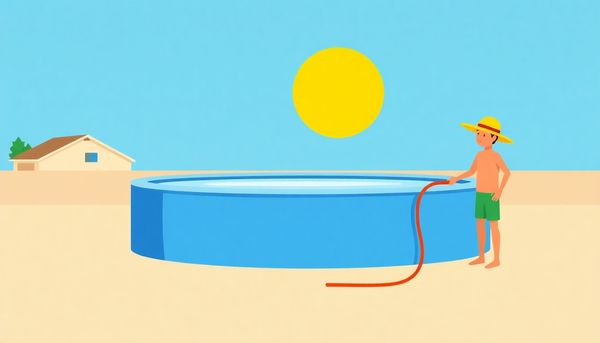
On a warm afternoon, with the sun gently dipping towards the horizon, you might find yourself staring at a pool that needs draining. The simplest of tools—a garden hose—can become your ally in this task. This method, albeit a bit time-consuming, is surprisingly effective for those not in a rush.
Start by submerging the whole length of your garden hose into the pool, ensuring it's filled entirely with water. Then, carefully seal one end with your thumb, lift it out, and place it on the ground lower than the pool water level. Release your thumb, and watch as gravity takes over, pulling the water from the pool and sending it out the end of the hose. If the siphon doesn't start on its own, attaching the hose to an outdoor faucet briefly can help kickstart the flow.
Patience is key here. As the water level drops, the siphon will naturally slow, leaving behind a small amount of water. For those final puddles, a shop vac might come in handy. This method requires minimal equipment and no electricity, making it a cost-effective solution, especially for smaller pools. While it might not win any speed contests, using a garden hose siphon is a dependable and straightforward approach to pool maintenance that anyone can master with ease.
Embarking on the task of emptying an above ground pool requires more than just a free afternoon and a bucket. Preparation is your ally here, ensuring the process goes smoothly without unwelcome surprises. Before you begin, take a moment to assess why you're draining your pool. Whether it's for repairs, chemical balance, or seasonal storage, knowing your purpose will guide the method you choose.
First, gather necessary tools. A garden hose, a sump pump, or a pool’s built-in drain adapter are your primary options. Each method comes with its own set of requirements, so having the right gear ready will streamline the process. If you’re leaning towards the garden hose siphon method, make sure the hose is long enough to reach from your pool to a drainage area where the water can safely flow away.
Next, check the surrounding area for local regulations on pool draining. Some neighborhoods have specific rules about where you can discharge pool water, so a quick phone call or website visit to your local water board can prevent potential fines. Additionally, ensure your working area is clear of obstacles and secure any necessary extension cords if using an electric pump.
Finally, consider timing. Draining a pool can take several hours, or even days if using a hose siphon, so choose a day when the forecast is clear of rain. This ensures that your efforts aren't undone by unexpected weather changes. With these preparations in place, you're ready to tackle the task with confidence, knowing that you’ve set the stage for a successful pool draining experience.
Creating a garden-hose siphon to drain an above ground pool is like discovering a hidden superpower—simple yet effective. On a warm weekend morning, I once faced the daunting task of lowering the water level in my pool. Without a pump in sight, I resorted to the humble garden hose, an underestimated tool.
First, grab a standard garden hose and ensure it's long enough to reach from your pool to your chosen drainage area. Then, submerge the entire hose underwater, ensuring all air bubbles are expelled. This step is crucial; any trapped air can sabotage your siphoning efforts. Once your hose is saturated, seal one end with your thumb to keep the water pressure intact while you pull it out of the pool.
Position the sealed end lower than the pool, and when ready, release your thumb to let gravity play its part. The water should start flowing smoothly, like watching a gentle stream trickle down a hill. If the flow is stubborn and refuses to start, you might need to give it a nudge by briefly connecting it to an outdoor faucet to push the water through.
Patience is your ally here. The process, while slower than a pump, is perfect for partial drainage and won’t cost you a cent. And once you're done, you'll find a special satisfaction in having harnessed physics for a DIY solution.
Maintaining the chemistry of your pool water is akin to a delicate dance, where balance is key. Over time, even the most vigilant pool owners may observe an unwanted accumulation of total dissolved solids (TDS). These sneaky by-products of the very chemicals you trust to keep your pool pristine can disrupt the harmony of your water. Imagine, for example, a fine summer day when you take a dip, only to find the water unwelcomingly cloudy or harsh on your skin. This often signals that your TDS levels have climbed beyond the optimal 2,500 parts per million (PPM). At this point, draining and refilling a portion of your pool water is not just a recommendation—it’s a necessity.
Similarly, cyanuric acid (CYA) levels can also rise, especially in pools regularly exposed to stabilizing agents in chlorine products. High CYA levels make it challenging for chlorine to do its job, leaving your pool vulnerable to bacteria and algae. So, while draining water may seem like a chore, it’s a crucial step in resetting your pool’s chemistry. Personally, I recall a season when neglecting this task led to a regrettable green tinge taking over the water—an oversight that a simple partial drain could have prevented.
Once the water is restored to a healthier balance, you can enjoy all the pleasures of a pool without the worry, ensuring each splash is as refreshing as intended.
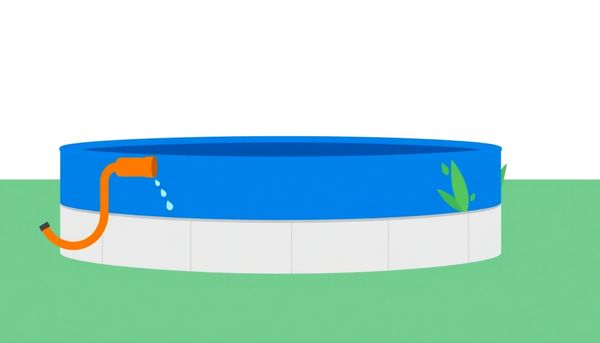
Ever thought about the silent hero of your swimming pool? It's your pool liner, tirelessly holding the water and braving the elements, all while ensuring you enjoy those summer splashes without a hitch. When it's time to drain the pool, whether partially or fully, protecting this unsung hero from damage becomes paramount. You see, an exposed liner is more vulnerable than you might imagine; sunlight, sharp objects, and even shifting ground can threaten its integrity.
Planning ahead can save you from unintended mishaps. First off, choose a day with mild weather. The blazing sun can dry out and weaken the liner, leading to cracks or tears. Next, as you begin the draining process, keep an eye on the liner's position. Without the water’s weight, liners may shift or wrinkle, especially if they weren't installed perfectly. This is where a gentle hand comes in handy—smooth out any folds or wrinkles that appear as the water level drops.
Moreover, if you're dealing with repairs, avoid leaving the pool empty for extended periods. A friend of mine once learned this the hard way; her liner shrank due to prolonged exposure, resulting in costly replacements. Fill the pool back up as soon as possible after repairs to maintain the liner’s shape and elasticity. By taking these steps, you'll ensure that your pool liner stays in top condition, ready for the next season of fun.
Embarking on the task of draining an above ground pool requires a thoughtful approach, ensuring the right method aligns with your specific needs. Whether faced with murky water that demands a fresh start or the necessity of packing up before the winter frost bites, the technique you choose can impact both the time you invest and the effectiveness of the task.
Reflect on your pool's size and the urgency of the situation. For those only needing a partial water replacement to adjust chemical imbalances, such as high cyanuric acid levels, a garden hose siphon serves as a simple, albeit time-consuming, solution. This method, which involves submerging the hose entirely before letting gravity do its work, suits those who prefer a cost-effective, manual approach. However, expect a slower pace and the possibility of residual water at the pool's base.
On the other hand, a submersible pump, though requiring an upfront investment, offers efficiency, particularly when dealing with larger volumes. With the ability to rapidly drain the pool, it’s the method of choice for many, especially if winter preparations demand a complete water removal. Renting a pump from a local hardware store provides a practical alternative if the task is a rare occurrence.
Finally, if your pool comes equipped with a drain adapter, it's worth exploring this feature for a balance of ease and speed. Remember, each method has its unique rhythm and result, so choose wisely to safeguard your pool and ensure a smooth draining process.
Sunshine and pool time go hand in hand, but when it comes to an empty above ground pool, the sun transforms from a friend into a formidable foe. The intense rays can spell disaster for your pool liner, causing it to crack, fade, or become brittle. A friend of mine once overlooked this crucial detail, and the resulting damage meant investing in an entirely new liner—an avoidable expense with a little foresight.
To guard your liner against the relentless sun, timing is everything. Ideally, plan your draining schedule during cooler parts of the day or when overcast skies provide natural shade. This minimizes the time your liner is exposed to direct sunlight. If clouds aren't on your side, temporary covers like tarps can provide much-needed protection. These barriers not only shield the liner from UV rays but also from any debris that might blow in during a breezy afternoon.
Act swiftly once repairs or maintenance tasks are completed. The goal is to minimize the period your pool remains empty. Refill it promptly with water to maintain the liner's flexibility and structural integrity. If multiple garden hoses are at your disposal, utilize them to hasten the refilling process. This approach ensures your pool is up and running before the sun has a chance to take its toll, saving you from unwanted liner replacements and keeping your pool party ready.
Keeping a watchful eye during the pool drainage process is much like overseeing a delicate operation. Imagine you've set up your method—be it a trusty garden hose siphon or a powerful sump pump—and now it's time to let the magic happen. However, the magic only works well if you’re attentive. Each step demands your presence to ensure everything progresses smoothly. From the moment water starts disappearing until only droplets remain, vigilance is your best ally.
Start by checking that your drainage method is functioning correctly. If using a garden hose siphon, confirm that the water flows steadily without blockages. A kinked hose can halt your progress, much like a detour on a road trip. With a sump pump, keep an eye on the power connection and ensure it's adequately plugged in. Frequent checks prevent the pump from running dry, which can lead to overheating and potential damage.
It's also crucial to observe how the pool liner reacts as the water level drops. Water provides structural support to your pool, so a sudden imbalance might cause shifts or wrinkles to appear. Monitoring these changes allows for timely adjustments. Another handy tip? Use the remaining water for watering plants or washing outdoor surfaces, making your draining process eco-friendlier.
Ultimately, the secret to a successful drainage lies in the details. By staying attentive, you not only safeguard your equipment but also ensure your pool is ready for whatever comes next—be it repairs, cleaning, or winter storage.
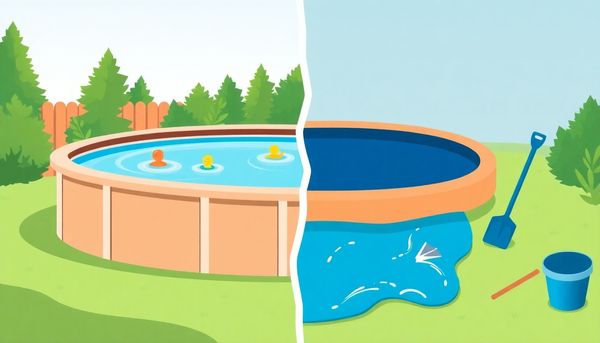
Choosing the right method to drain your above ground pool isn't just about convenience—it’s also about ensuring the longevity of your pool. Each technique comes with its own set of advantages tailored to specific needs. Let’s explore them through relatable scenarios.
Imagine it's the end of summer. You’ve noticed that your pool’s water chemistry is a bit off, perhaps due to high cyanuric acid levels. In this case, a simple garden hose siphon works wonders. This method is particularly handy if you only need to lower the water level slightly. By submerging the hose and letting gravity take over, you can gradually remove just enough water to make chemical adjustments, all without spending extra on equipment.
On the other hand, if your pool resembles more of a swamp than a swimming oasis, a submersible pump becomes your best friend. This powerful tool can drain large volumes of water swiftly, ideal for those times when you've decided to store your pool for winter or if major repairs are necessary. Although renting one from a hardware store is an option for the infrequent user, purchasing a sump pump might save you time and hassle in the long run if draining becomes part of your annual routine.
For those with temporary above ground pools like Intex or Coleman models, the built-in drain adapter is a lifesaver. This feature, often overlooked, allows for efficient drainage when dismantling the pool for off-season storage. Remember, whichever method you choose, keep a close eye on the process to prevent any mishaps or damage.
Sometimes, the need to drain an above-ground pool sneaks up on you like an unexpected thunderstorm. Perhaps the pool water has turned into a murky swamp, teeming with uninvited organisms, or maybe the structure itself demands urgent attention after a particularly harsh season. Each scenario requires its own unique approach, and understanding your specific needs before diving into the task can save time, effort, and possibly the future of your pool.
First, reflect on whether a complete water removal is necessary. More often than not, partial draining suffices, especially for minor chemical imbalances or leak repairs. Total dissolved solids (TDS) can build up unnoticed, and when levels surpass 2,500 parts per million, a partial refresh is essential. Similarly, high cyanuric acid levels call for a moderate water replacement to keep the balance in check.
In contrast, significant structural repairs or seasonal storage require a full drain. If your pool faces the threat of sub-freezing temperatures, draining it for winter storage might be crucial. A friend of mine once ignored this precaution, and come spring, her pool liner resembled a brittle sheet of ice—a costly oversight.
Furthermore, consider the pool's size. Smaller pools lend themselves to manual or hose siphoning, while larger bodies of water benefit from the speed and efficiency of a submersible pump. Each method has its merits, and selecting the right one depends on the urgency of the task and available resources. Always factor in these elements to ensure your above-ground pool remains a source of joy rather than stress.
Draining an above ground pool might seem straightforward, but ensuring it’s done safely is crucial to preserving your pool’s structure and avoiding costly repairs. A good friend of mine ignored the finer points of pool draining once and ended up with a crumpled pool liner and a hefty replacement bill. To avoid such mishaps, let's explore some effective strategies to handle water removal safely.
Begin with understanding the limits of your pool liner. Draining too much water can cause the liner to shift, wrinkle, or even tear under its own weight. This is especially true in sunny weather, as the UV rays and heat can make the liner brittle. To prevent damage, only drain the water to the level necessary for your task, whether that’s seasonal storage, chemical rebalance, or repair work.
Use the right equipment. For a swift and efficient process, consider a submersible pump, which can handle large volumes of water without the risk of air entering the lines. However, if time is on your side and you're keen on a DIY approach, a garden hose siphon works well for partial drains, though it requires patience as the water trickles out.
Always keep an eye on the process, regardless of the method you choose. It’s tempting to walk away and let the pump or siphon do its thing, but constant supervision can prevent unexpected problems. A slow leak or an unattended pump can lead to flooding and damage to your yard or pool’s foundation.
Remember, once your task is complete, refill the pool promptly. An empty pool left in the sun can be as damaging as over-draining, leading to warped or cracked surfaces. By ensuring a quick refill, you'll protect your pool’s liner and be ready for the next splash.
The art of draining an above-ground pool without a pump might sound daunting, but with the right tools and techniques, it’s a manageable task. A few summers ago, I found myself facing a similar challenge. My pool had gathered a cocktail of fallen leaves, and it was time for a fresh start. Armed with only a garden hose, I learned that patience and a clever approach can transform what seems like a chore into a satisfying project.
Start by submerging the entire garden hose in the pool, ensuring it fills completely with water. When you pull one end out and place it downhill, gravity does its magic, creating a siphon. This method, reminiscent of a school science experiment, is surprisingly effective. However, be prepared for a leisurely pace, especially if your pool is on the larger side. As the water level drops, the siphon slows, often leaving a stubborn puddle at the bottom. A trusty shop vac can swiftly tackle these last drops, ensuring you leave nothing but a pristine liner in your wake.
For those looking for a quicker solution, consider investing in a sump pump. It’s a valuable addition to your pool care arsenal, especially for those regular winter preparations. When using a sump pump, ensure it’s securely positioned at the pool’s lowest point, and always stay nearby to monitor progress. This not only speeds up the process but also safeguards your equipment from running dry.
Innovative techniques like these not only optimize your pool draining efforts but also minimize potential damage risks. And remember, with each successful draining, your confidence in managing pool maintenance will undoubtedly grow.
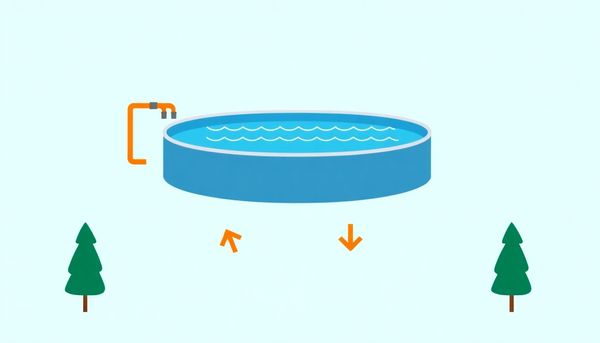
When the leaves begin to fall and the air starts to bite, it's time to put your pool to rest for the winter months. Ensuring that your above ground pool is properly stored can make all the difference when warmer weather rolls around again. To start, thoroughly clean the pool by skimming off debris and scrubbing any lingering stains from the liner. This not only makes for easier water maintenance next season but also prevents potential damage from residual chemicals or dirt left to stagnate.
Next, focus on dismantling any accessories, such as ladders and pumps. These items fare better in storage, protected from winter's chill. A friend of mine once left his pool ladder out through a harsh winter, only to find it brittle and cracked come spring. It’s a small task that saves both time and money later.
Drain the pool carefully using one of the methods best suited to your pool's size and location. Siphoning with a garden hose can work for smaller setups, while submersible pumps expedite the process for larger pools. Remember, the goal is to leave the liner with minimal water, reducing the risk of ice formation and subsequent damage. Once drained, ensure the liner is dry and fold it loosely to avoid creases. Store it in a cool, dry place shielded from the elements.
By taking these steps now, you safeguard your pool from winter's wrath and ensure an easy setup when sunny days return.
Draining an above ground pool might seem daunting, but with the right approach, it can become a straightforward task. One summer, I faced the challenge of draining my pool after a particularly brutal storm left it murky and uninviting. I quickly learned the importance of doing it safely to avoid damage.
Start by choosing your method wisely. If you opt for a garden hose, it's a simple yet time-consuming process. Submerge the hose fully to create a siphon, letting gravity work its magic as water slowly exits the pool. Remember, this method will leave a small amount of water at the bottom, which can be removed with a shop vac.
For those needing speed, a submersible pump is your best ally. This tool can drain the pool efficiently, but it needs careful attention. Make sure your pump's power cord can reach from the outlet to the pool’s depths without straining. While renting might be a cost-effective choice for a one-off task, buying one could save you time and effort if you find yourself draining the pool regularly.
Lastly, check if your pool has a built-in drain adapter. This feature simplifies the process significantly, sparing you the need for additional equipment. No matter the method, never leave the pool empty for long. Sunlight can harm the liner, so refill promptly after finishing repairs to keep your pool in pristine condition.
When it comes to draining an above ground pool, selecting the right equipment feels a bit like choosing the right tool for a DIY project. Each tool has its specific purpose, and your choice can drastically affect the time and effort you'll spend. Whether you're faced with a pool full of murky water or the need for seasonal storage, the right equipment makes all the difference.
For small tasks, a simple garden hose works wonders. It’s ideal for partial draining when your goal is to balance water chemistry. This method is budget-friendly and requires only a bit of patience. Once, my friend used this trick to lower her pool's cyanuric acid levels. It took a weekend, but it worked without a hitch.
On the other hand, when you’re dealing with a larger pool or need to empty it completely, a sump pump is your best ally. These pumps are efficient and can save you hours, if not days. During one particularly cold winter, I borrowed a sump pump from a neighbor to prepare my pool for storage. The process was straightforward and quick, turning what could have been a tedious task into a simple, manageable one.
Consider using a built-in drain adapter if your pool is equipped with one. This feature simplifies the draining process significantly. Each option has its merits, and the goal is to align your equipment choice with your specific pool needs, ensuring the task is both efficient and effective.
An above ground pool liner is like the unsung hero of your backyard oasis, quietly doing its job day in and day out. It protects the pool's structure, holds the water, and provides a smooth surface for swimmers. Yet, when it comes time to drain your pool, it faces its greatest challenge. Sudden changes in pressure or exposure to the elements can lead to costly damage.
The first step in protecting your liner begins before you even start draining. Always choose a method that minimizes stress on the liner. A slow, controlled process is your best ally. Using a garden hose to siphon water can be a gentle approach, though it’s time-consuming. Alternatively, a submersible pump speeds things up but should be monitored closely to avoid sudden pressure changes.
Beyond the draining process itself, timing plays a crucial role. Draining on overcast days, or during the early morning or late afternoon, helps shield the liner from harsh UV rays, which can cause it to dry out and crack. If you need to leave your pool empty for repairs, cover the liner with a tarp to protect it from direct sunlight and debris.
Remember, a diligent approach to draining not only preserves your liner but extends its life, saving you potential headaches and expenses down the road. Treat it with care, and it will return the favor by keeping your pool ready for countless summers of enjoyment.
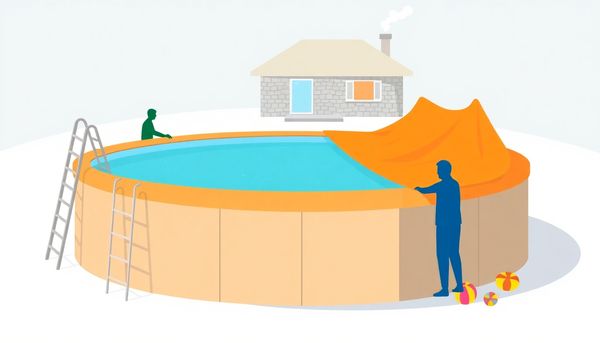
Achieving the perfect balance of water chemistry in your above-ground pool is akin to maintaining harmony in a finely tuned orchestra. Each element, from chlorine to pH levels, plays its part. Ignoring these aspects can lead to murky waters, literally and figuratively. Over time, despite your best efforts, total dissolved solids (TDS) accumulate, like dust settling on an untouched shelf. When TDS levels surpass 2,500 parts per million (PPM), it’s time for a refresh. This involves partially draining your pool to dilute those stubborn remnants with fresh water.
Cyanuric Acid (CYA) levels present another challenge. Essential for protecting chlorine from the sun, excessive CYA, however, can thwart your sanitation efforts. If you find your CYA levels soaring beyond 100 PPM, a partial drain is the only way to bring them back into check. It’s a bit like resetting a game to its initial settings, giving you a clean slate to work from.
Incorporating regular testing into your routine can save a headache later. A simple test kit can become your most trusted ally. By keeping an eye on your pool’s chemistry, you not only extend the life of your pool equipment but also ensure a refreshing dip every time. Whether adjusting for TDS or CYA, remember that maintaining optimal water chemistry is an ongoing journey, not a one-time task.
Keeping an eye on your pool’s water level might sound like a small task, but it's a crucial part of maintaining the health and longevity of your above ground pool. Regularly monitoring the water level ensures that you catch issues early, preventing bigger problems down the line. For example, if you notice the water level dropping faster than usual, it could indicate a leak that needs immediate attention. On the other hand, overfilling due to heavy rain can strain your pool’s structure and filtration system, leading to potential damage.
Each week, take a few minutes to check the water level in your pool. Ideally, it should be halfway up the skimmer opening. Too low, and the pump might run dry, risking overheating. Too high, and the skimmer may not operate efficiently, impacting your pool’s cleanliness. During hot summer days, increased evaporation might mean more frequent top-offs.
Use your garden hose to adjust the water level to its optimal height. If you’re draining the pool, measuring the water level helps you track progress, ensuring you don’t accidentally leave too much water, which can hinder repairs or maintenance tasks.
Just like checking your car’s oil or your home’s smoke detectors, routine water level checks are a small habit with significant benefits. Not only does it save time and money by preventing costly repairs, but it also provides peace of mind, knowing your pool is in top-notch condition for those spontaneous summer splashes.
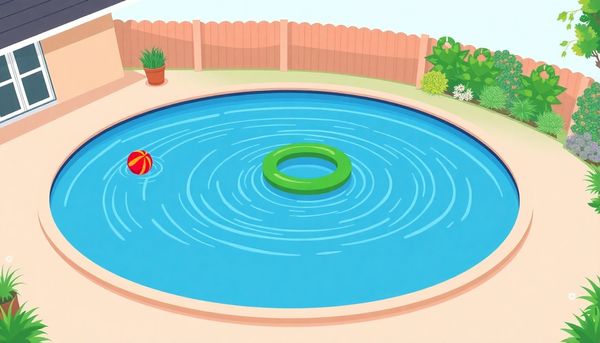
This article provided insights into maintaining your pool. Start your pool care journey today!
Want to become a pool maintenance expert? Our free Pool School course covers everything you need to know about pool care. From basic maintenance to advanced troubleshooting, you'll learn how to:
Join over 10,000 pool owners who have already transformed their pool care routine. Get started with our free Pool School course today!